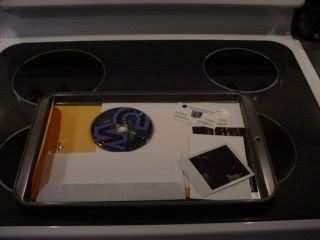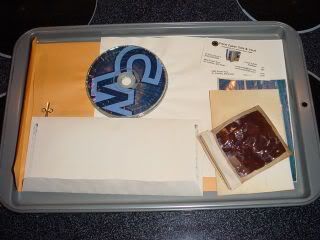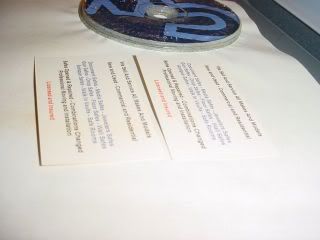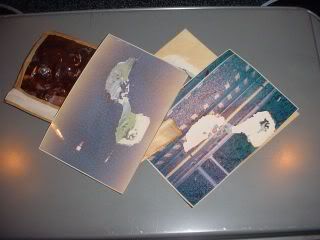Here’s why I think the Sturdy gun safe has the AMSEC BF beat though in the area of fire protection and since I can’t run an actual test and show the results I’m forced to give a mathematical model. Sorry this is long but I’m sure someone is going to want to know where the numbers are coming from.
Assume we have both of these gun safes in a house fire which is 1275F and continues for 90 minutes until the fire department puts the fire out (According to AMSEC’s website the BF series is rated for Mercury Class III fire protection of 1275°F for 90 minutes and designed to maintain an interior temperature of less than 350°F so we will use those numbers as the standard since the BF is UL listed [this gun safe is not tested by UL as I later found out].) For this example both safes will have the same dimensions: 2 meters tall, 1 meter wide and 1 meter deep (using SI units are easier to follow the numbers.)
We know from thermodynamics that the primary mode of heat transfer from the house fire to the interior of the gun safes will be by way of conduction. Fourier Law of Conduction (steady state) tells us that heat will flow from the high temperature region to the low temperature based on the following equation: Q=-kA (T2-T1)/L where q is the heat flow rate, k is the thermal conductivity coefficient of the material in question, A is the cross section area of the heat flow region, L in the depth of the material and T2-T1 is the delta difference in temperature between boundaries (exterior to interior).
The Sturdy safe’s materials are well defined on their website so it’s easy to build a model for their design and since we are just comparing the two safes on a one to one basis, we can find the heat transfer of sections and add them up for the total heat flow rate to the safe’s interior.
The standard Sturdy Safe with fire lining has four layers as seen from their website. For the sides and back of the safe there is an outer shell of 7ga steel, next layer is a 1 inch(0.0254m) 2300F rated ceramic wool blanket, next 1 inch (0.0254m) of 1000F fiber glass, then a 14ga steel inner liner. Because the materials in the safe are in contact with each other at their boundaries we can just add up their thermal resistances (similar to an electrical circuit with resistors in series) and determine the rate of heat flow Q. The coefficients (K) of materials in SI units used are: Steel (1%carbon) = 43 W/mC, Ceramic Wool = 0.06 W/mC, Fiber Glass = 0.04 W/mC. So substituting the appropriate thermal resistance coefficients and depth of material gives and the temperature difference between the 1275F house fire and average temperature of the safe’s interior to go from room temperature to 350F (in SI units though) gives the following:
Q(sides and back)=-1m^2(691C-100C)/(0.0048/43+0.0254/0.06 +0.0254/0.04+0.0019/43) = 549 W (per meter sq of surface area).
For the top and bottom of the Sturdy Safe there is an extra inch of Fiberglass insulation depth so that rate of heat transfer is: Q(top and bottom)= 349 W/m^2. For the door, there is thicker steel but the heat flow rate is basically the same as the top and bottom of the safe. So based on the dimensions of the safe we have the overall average heat flow rate would be:
Q (Overall Heat Flow Sturdy) = (4m^2)(349W/m^2)+(6m^2)(549W/m^2) = 4690Watts
For the AMSEC BF series safe there is a little reverse engineering needed since we don’t have specs on their “Drylight” concrete. The thing that we generally know about concrete is strength increases with density but the opposite is true for thermal insulation. Because the primary purpose of the insulation in the BF series safe is fire protection (and also based on comments made from those who have handled the material) Drylight is likely a Portland cement / Perlite mix aka Perlite Concrete). Since we know that AMSEC recently increased the density of the concrete mix and reduced the thickness of the shell of the BF from 10ga steel to 11ga steel, it is likely that the folks at AMSEC determined that they had room to increase the density of their concrete insulation without jeopardizing their UL fire rating. So based on that, my best guess is they were using a Portland cement to Perlite mix of 1:8 prior to the change but are now using 1:6. As reference, standard concrete has a thermal conductivity co-efficient K of 1.7 W/mC with a compressive strength around 3000PSI. Perlite concrete with a 1:6 mix has a K of 0.084 W/mC but a compressive strength of only 125PSI so there is a big tradeoff in strength to get the insulation properties.
As we know now from recent discussions, the body roof and floor of the BF series has three layers: an 11ga steel shell, around 2” of Drylight and another 14ga inner liner. The door has ½” of steel with 1” of Drylight for insulation. So doing a similar analysis as done above for the Sturdy safe shows that the overall average heat flow rate to the interior of the AMSEC BF series safe in a 1275F house fire would be:
Q (Overall Heat Flow BF Series) = 11,721Watts.
So based on this analysis, the AMSEC BF series safe transfers heat to the interior of the safe at a rate 2.5 times higher than the Sturdy Safe design. That would mean for the same house fire where an AMSEC BF series safe’s interior temperature reaches 350F the Sturdy safe would be around 185F. Also, since the AMSEC BF uses concrete with a significant mass as an insulating material, the insulation itself will hold heat and continue to transfer heat to the interior of the safe long after the fire ends and that’s even if the exterior had been cooled once. For the Sturdy Safe’s design, most of the mass is located on the steel shell with the light weight insulating material contributing a small percentage of mass and heat storing capacity of the safe so if you cool the exterior of the Sturdy safe after a fire, it won’t re-heat itself afterwards.
This is the longest comment I ever have made on a thread so I'd better stop but in my opinion and especially after doing this analysis, the Sturdy safe design is far superior to the AMSEC BF series in fire protection.







